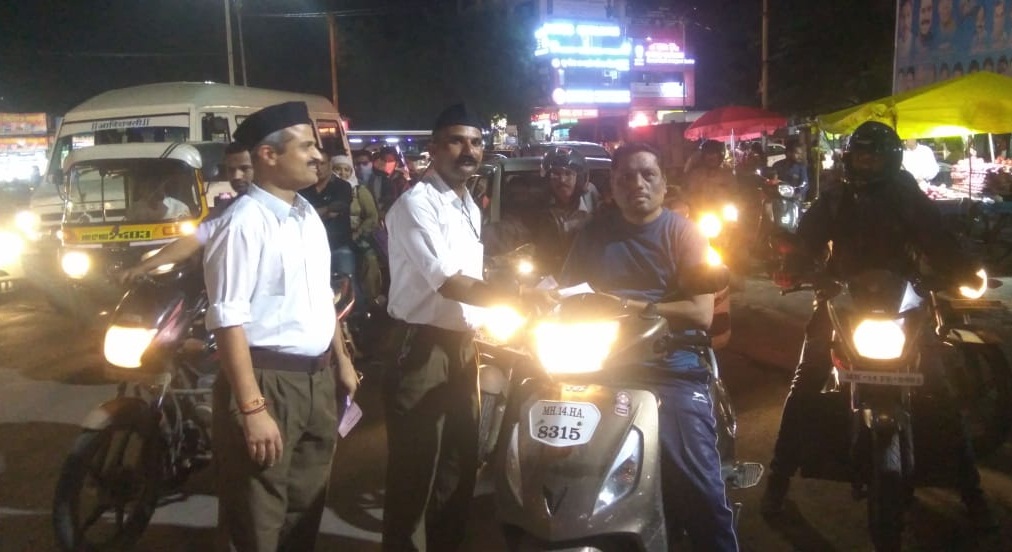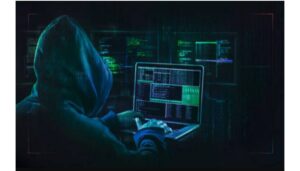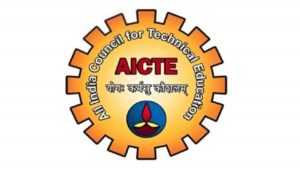RSS volunteers study Pune traffic to solve recurring problems

Sumit Singh
Pune, August 23, 2019: The Rashtriya Swayamsevak Sangh (RSS) Pune Mahanagar has started study of different roads and areas of Pune city, to help the Pune Municipal Corporation (PMC) and Pune traffic police to solve traffic-related problems. About 10,000 RSS Swayamsevaks are taking part in this study.
RSS Mahanagar Sanghchalak Ravindra Wanjarwadkar the traffic study report will be submitted to government agencies, after taking guidance of experts and institutions. The volunteers are identifying traffic congestion spots, reasons for traffic jams and accordingly suggest solutions so that agencies can solve traffic problems.
RSS Mahanagar Karyavah Mahesh Karpe said that every year, RSS Pune Mahanagar conducts a drive on social problems. This year, the focus is traffic safety.
As per study conducted by students of Shri Chhatrapati Shivajiraje College of Engineering, Dhangwadi in Bhor taluka of Pune district, since 1960, Pune traffic has increased by more 105 times, whereas the road network has grown by merely by 6 times. “Hence due to huge traffic load, the road network is insufficient and hence is causing traffic jams and fatal accidents. As per the data, the existing road network is 7% while the requirement is more than the double i.e. 15% .Hence there is a gap of 8% between them and due to this gap, there are many huge traffic jams in different parts of the city and these traffic jams are time consuming and hence the commuters are in hurry to reach their destinations. For saving their journey time, some of them increase their speeds and meet with accidents which may cost to their properties and sometimes to their life. The road infrastructure has not expanded in tandem with the increase in the number of vehicles in the city. In the last four decades, the population of the city has increased four times whereas the vehicle population has increased 87 times and the road length has increased by only five times”, the report stated.
About the traffic issues in Pune, Tejas Gadgil, posted on Quora, “One mode of transport is by railways. There are local trains but that ply from Pune to Lonavla, only helpful for those who are commuting to Bhosari-Pimpri-Chinchwad MIDC, colleges or schools in the same area or anywhere else far from the main city corporation limits. (Talegaon, Dehuroad, etc.) Basically not of any help to one’s commuting to colleges or offices within the city.”
He further added, “The other is by road. If you don’t have any vehicle, you may use the bus, autorickshwas or any other private cabs (Uber,Ola,RadioWings). Although there is shortage of public buse’s, they are crowded during the peak hours which means we certainly have a large number of people using those. There are lot of commuters using private cabs and auto’s as well (majority of them are working professionals from outside Pune, ladies using auto’s, some localities who have cab pick up and drop service from their offices).”
He also spoke about company buses and car pooling, “There are private company buses (Infosys, TCS, CapGemini- just to name a few) , private school buses and vans which are also significantly in a large number. Then, there are the car user’s. Car pooling is a new concept so the majority is used by office-goers (particularly in the age of 30-50) when you’ve saved enough to buy a car. The number of people using car’s is increasing day by day again due to a booming industry and IT sector.”
Number of vehicles getting registered everyday is big issue. “However, this number taken as a whole is nowhere close to the number of two-wheelers. With an Addition of approx 200 two wheelers per day, you can just imagine the total number. You might find at least 1 two-wheeler per person in this city with a population of close to 80 lakhs and counting”
He concluded, “Traffic situation is pretty bad all over the city and worst in the areas where there are a large number of college’s and school’s (For instance the peth area’s), offices (IT park at Hinjewadi or Kharadi, Industrial Zone at Bhosari) in the peak hours but nowadays you can find at anytime of the day. Other factors are due to in-discipline (mostly 2 Wheeler’s ahead in this), narrow roads ( okay, some roads are wide but not enough to accommodate the huge number of vehicles in rush-hour), failure of public transport to attract people to use it more ( there has been only a substantial increase in commuters) and the ever increasing number of private vehicles (2 and 4 Wheeler’s)”





